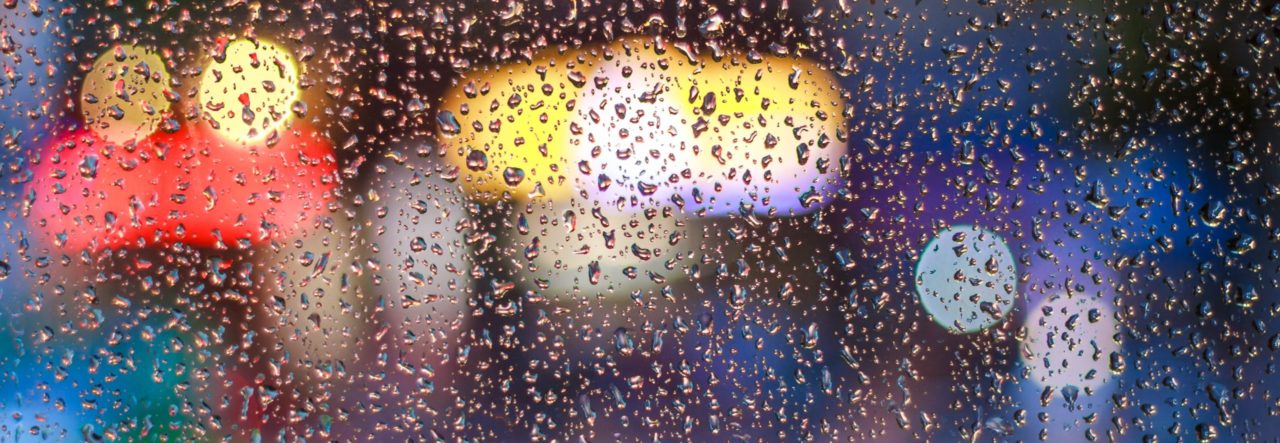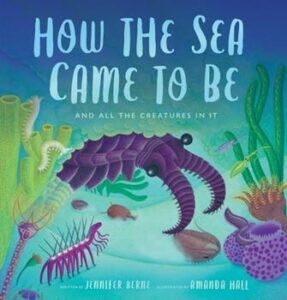This month’s PB review is by Ryan G. Van Cleave (Owner/Operator of Only Picture Books) and Florida-based author/illustrator Loreen Leedy.
–Ryan’s Review of the Writing–
Jennifer Berne’s new picture book, How the Sea Came to Be, is an evocative and captivating exploration into Earth’s aquatic history. The storytelling (divided into three parts—The Birth of the Sea, The Birth of Life, and All That the Sea Came To Be) combines elements of geology, oceanography, biology, and evolution. Written in rhyming verse quatrains, the narrative is as much a lyrical journey as it is an educational resource, offering readers an overview of over 4.5 billion years of oceanic history. Yeah, that’s a lot of room to cover, and she manages it on in a robust 56 pages.
The vivid imagery created by the text grips from the outset, with descriptions that bring to life the primal chaos of the earth’s formative years. I’m also a fan of how Berne goes beyond rhyming to include alliteration (“They blazed and they blasted and boomed”) that add to the meter (mostly iambic) which makes this a fun read-aloud.
Accompanying Berne’s textual journey are Amanda Hall’s mixed media illustrations. I’ll let Loreen dive deeper into those (like the watery pun?), but I find them to be integral components of the learning journey, adding richness to the storytelling. The layout of each spread invites exploration and appreciation, with the varied marine life forms being depicted in their natural, multi-layered aquatic habitats. I wish there were clearer labels directly on the art, but most of what’s shown is either in the main text or the extensive back matter. The full-page notes from both creators, glossary, full-spread chart of “Ocean Creatures Over Time,” and recommended readings and resources adds an extra layer of depth (is that another ocean pun?) that will no doubt be a welcome addition for the home school and classroom market.
It’s a challenge to simplify and present complex scientific concepts in a way that’s both accessible and engaging to young readers. For the most part, that’s what happens here. Ultimately, this picture book inspires curiosity and invites questions about our world’s natural history, making it a solid resource for young scientists or anyone with a keen interest in the marine world.
4.5 out of 5 pencils
–Loreen’s Review of the Illustrations–
The rhyming text and impressive illustrations in this nonfiction book present a whirlwind tour of the earth’s oceans from the earliest moments in prehistory up to the present day. Colorfully complex endpapers give a sneak peek of the visual delights to come. Every page invites readers to explore the vastly different environments that once existed (or still exist) on our planet.
Earth’s early period of cosmic bombardment and erupting volcanoes appear in dramatic compositions of orange, black, and white. Monochromatic scenes depict a cooling, rainy world with brand new oceans full of crashing waves. Life begins microscopically small yet with pulsating energy, pictured as tiny circles/cells that expand into more numerous and complex forms. Soon, simple but more recognizable animals such as sponges and jellyfish cling to rocks or float in the salty waters.
A delightful close-up view of a worm wriggling along the ocean floor conveys an important milestone in the history of life: the ability to travel in a desired direction. Hard-shelled arthropods scuttle and swim through a viridian and magenta frieze. One illustration requires a 90-degree turn of the book to explore the dark depths of the sea where unusual, even glowing creatures dwell. Each spread moves forward in time as cephalopods, fish, reptiles, and whales wander the seven seas in their turn.
The animals are drawn and painted in a lightly stylized, realistic way with a hint of friendly charm. Technical jargon is avoided in the main text, while the back matter provides additional in-depth information such as an illustrated fold-out chart of geological eras. Curiously, plants are not mentioned despite their vital role in the food chain. Aside from that quibble, this is a terrific book to engage young readers in learning about major ocean-related developments in prehistory. The beautifully designed artwork is outstanding throughout with numerous details for young readers to examine and enjoy.
4.5 out of 5 crayons
 Loreen Leedy is the author and illustrator of over 45 picture books for children. Most of them include educational content such as math, science, language arts, and social studies topics, presented with humor and enthusiasm. Her titles include My Teacher Is a Dinosaur and Other Prehistoric Poems, Jokes, Riddles, & Amazing Facts; Fraction Action; Measuring Penny; and Crazy Like a Fox: A Simile Story. She lives with her husband on a rural property in central Florida.
Loreen Leedy is the author and illustrator of over 45 picture books for children. Most of them include educational content such as math, science, language arts, and social studies topics, presented with humor and enthusiasm. Her titles include My Teacher Is a Dinosaur and Other Prehistoric Poems, Jokes, Riddles, & Amazing Facts; Fraction Action; Measuring Penny; and Crazy Like a Fox: A Simile Story. She lives with her husband on a rural property in central Florida.



Hello Ryan and Loreen,
Your reviews of HOW THE SEA CAME TO BE have just been forwarded to me. I’m so pleased that you enjoyed it!
Best wishes
Amanda